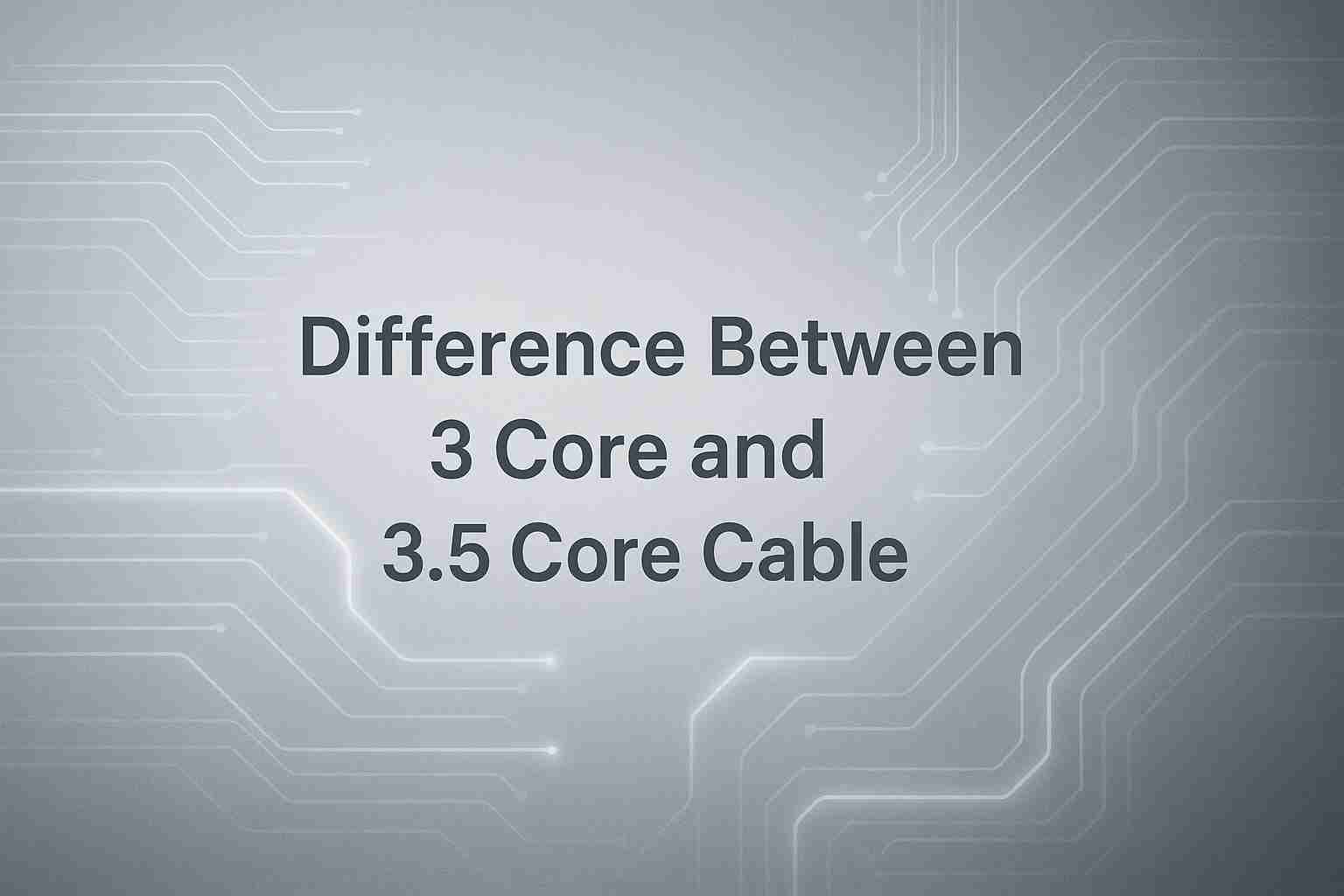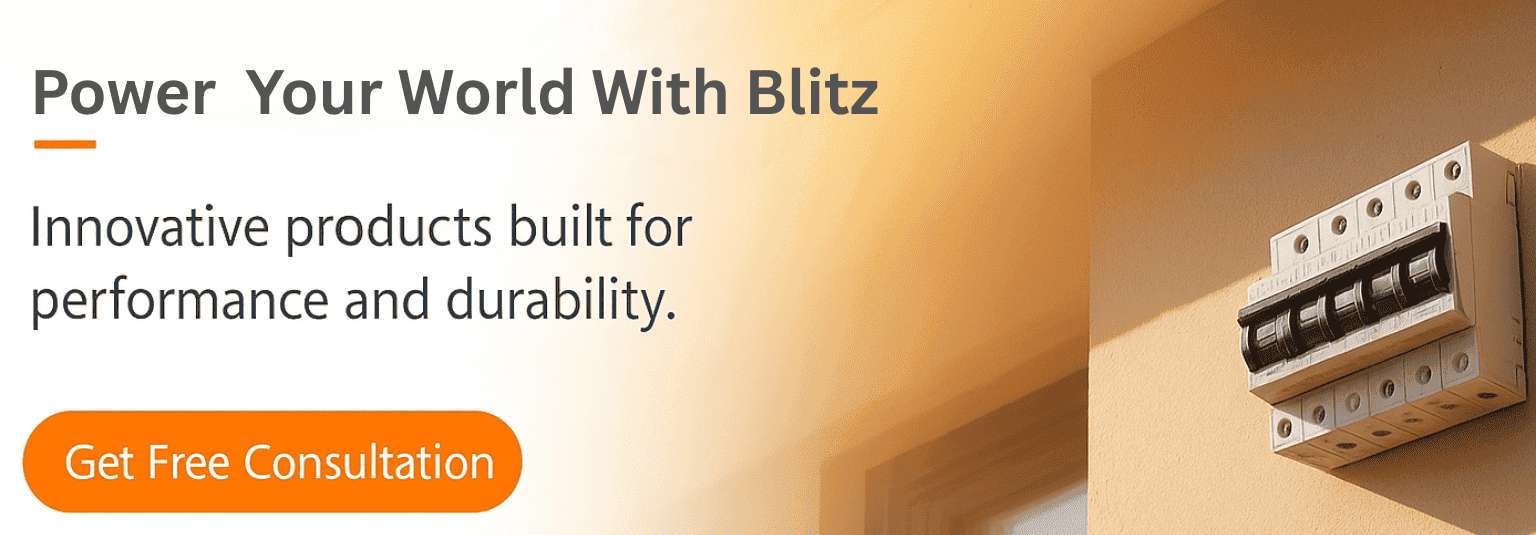Difference Between 3 Core and 3.5 Core Cable: Electrical Guide for Safe Wiring
For the world of wiring electricity, making the right cable decision is a great factor in determining whether or not your wiring will be safe, efficient and reliable in the long term. Simply put, 3 core and 3.5 core cables are the types of cables that are mostly used in the residential, commercial, and industrial areas. It is often said that the difference between the two is only minor but the truth of the matter is that knowing the difference can be a matter of life and death, at the same time, it can be a cost saving and a way of the performance optimization.

This guide will clarify the differences, the uses, and the safety measures concerning 3 core and 3.5 core cables so that you will be able to select the most appropriate one for your wiring projects.
What is a 3 Core Cable?
Basically, a 3 core cable is made up of three insulated conductors, each of which can carry an electric current on its own. Generally, these three cores are:
- Live (Phase) Wire - Used for carrying current to the load.
- Neutral Wire - Makes the circuit complete by returning current to the source.
- Earth (Ground) Wire - Is a safety feature that helps in directing the leakage current to the earth.
The three cores are wrapped in a dielectric jacket, which is commonly made of PVC or XLPE, thus providing the cable with strength, insulation, and protection against the weather.
Applications of 3 Core Cables:
- Residential wiring for lights, fans, and small appliances
- Small commercial installations
- Air conditioners and other single-phase devices
- Sub-circuits in industrial setups
What is a 3.5 Core Cable?
A 3.5 core cable may seem odd, but it's quite common in certain kinds of electrical installations. The cable features four conductors, of which three are of full size (phase wires) and the fourth is of half size, functioning as a neutral wire in some configurations. In short, the 0.5 core is not a complete conductor but is used for current return or earthing in less powerful load circuits.
Applications of 3.5 Core Cables:
- Three-phase power systems
- Industrial machinery requiring phase-specific wiring
- Substation or transformer connections
- Commercial establishments with moderate to heavy loads
Key Differences Between 3 Core and 3.5 Core Cables
| Feature | 3 Core Cable | 3.5 Core Cable |
|---|---|---|
| Number of Conductors | 3 (Live, Neutral, Earth) | 4 (Three full-sized, one half-sized) |
| Phase Type | Single-phase and some three-phase | Three-phase wiring |
| Neutral Size | Same as other cores | Half-sized for specific applications |
| Common Use | Residential, light commercial | Industrial, heavy-duty, commercial |
| Current Capacity | Moderate | Higher capacity due to three full phase wires |
| Flexibility | Easy to handle and install | Slightly rigid due to extra conductor |
| Cost | Lower | Higher due to additional core |
| Safety Considerations | Suitable for general wiring | Must be used as per electrical standards to prevent overloading the 0.5 core |
Why the Difference Matters
The differences between 3 core and 3.5 core cables are not only technical but they also affect aspects such as safety, efficiency, and cost.
Safety-wise, utilizing a 3 core cable in a three-phase system operating with heavy machinery may result in an overloading of the cable, thus, a risk of fire can be generated.
Efficiency-wise, a 3.5 core cable enables the current to be more evenly distributed in three-phase systems, which results in less energy being wasted.
Cost-wise, 3.5 cored cables will be more expensive at the outset but they will save you from long-term damage and maintenance costs.
Regulatory Compliance: Electrical codes and standards typically indicate the specific cable type that must be used for certain applications. Using improper wiring can be a safety regulation violation.
Choosing the Right Cable for Your Project
In deciding between 3-core and 3.5-core cables, you could consider:
- Load Requirements: Total current that the appliances or machine that you are using will draw must be calculated.
- Phase Type: 3 core cables are used in single-phase systems; 3.5 core cables can be used to connect a three-phase system.
- Distance: In case of very long cable runs it might be necessary to use higher capacity cables in order to prevent voltage drop.
- Safety Standards: Choose conductor size and insulation type that conform with the local electrical codes (e.g., NEC, IEC).
- Future Expansion: Consider whether your system will become bigger; thus, purchasing a slightly higher capacity cable can be your way of saving money for the future.
Advantages of 3 Core Cables
- Easy to install and handle
- Cost-effective for residential and light commercial use
- Compatible with most household appliances
- Available in various insulation types for different environments
Advantages of 3.5 Core Cables
- Suitable for three-phase systems
- Handles higher current loads efficiently
- Reduces voltage drop in industrial applications
- Ideal for long cable runs with balanced phase distribution

Common Mistakes to Avoid
- Using 3 core cable for three-phase loads - the current flowing through 3-core cable might exceed the cable rating which will cause heating of the cable.
- Not paying attention to the cable size - an insufficient cross-section of the cable can cause energy loss and the risk of fire.
- Wrong insulation choosing - the wrong insulation may be destroyed rapidly even if only a few times it is exposed to hard conditions.
- Mixing of single-phase and three-phase cables - could lead to equipment breakdown.
FAQs
Conclusion
The correct cable selection is the basis for great electrical safety, energy saving, and good electrical system operation. In particular, 3-core cables are perfect for residential and light commercial purposes while 3.5-core cables are the only ones that can be used for three-phase systems, industrial applications, and heavy current loads.
Knowing the differences, uses, and safety measures will keep you from fire hazards, guarantee the observance of the standards set for the electrical industry, and give your electrical system more time to use. It is always the best idea to get the guidance of a professional electrician when you are wiring your house or office so as to achieve the best performance and safety.
The right cable choice moment is your biggest bet for a safe and error-free wiring system which will definitely be a source of expensive repairs-free and accident-free situations in the future.